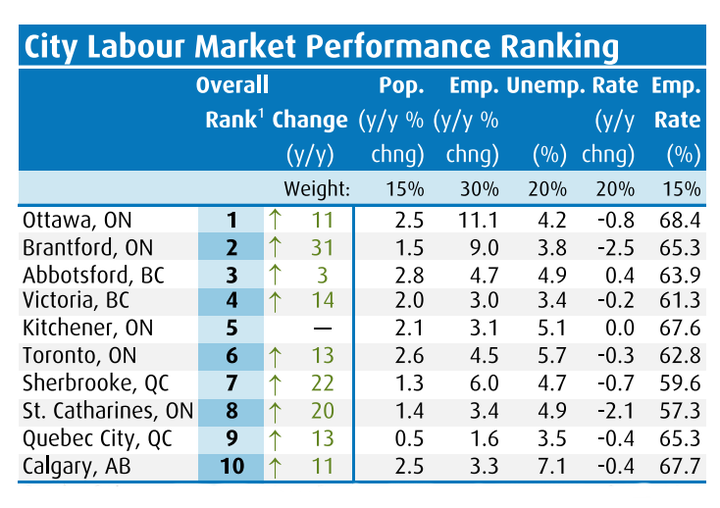MONTREAL ― Despite signs of a slowdown at the end of the year, 2019 was about as good as it gets when it comes to employment in Canada.
The country added a net 320,000 new jobs, almost all of them ― 283,000― full-time, according to Statistics Canada data. To cap off the run, December saw Canada’s jobless rate drop three notches to 5.6 per cent as the country added an unexpectedly large 35,000 jobs.
But a large chunk of those December jobs ― about 24,000 ― were created in one province, Ontario. That’s a pattern that has been repeating again and again recently. In fact, even though Ontario accounts for about 38 per cent of Canada’s population, it accounted for 76 per cent of all the jobs created in Canada in 2019, some 243,000.

In very distant second place is Quebec, having added 63,000 net new jobs last year ― still a very strong showing, historically. British Columbia added just 7,000 jobs, in a province with a labour force of 2.7 million people.
The number of jobs fell in the two provinces most dependent on the oil and gas industries, Alberta (down 4,200 jobs) and Newfoundland and Labrador (down 5,900) jobs.
A clear trend has emerged, with virtually all the job growth in the country taking place east of Manitoba ― with only Newfoundland bucking the trend. This is likely to prove to be a challenge for Prime Minister Justin Trudeau’s government as it grapples with a growing sense of alienation among Western voters.
Watch: The most in-demand jobs in Canada. Story continues below.
Western Canadians are feeling far more pessimistic about the economy lately. A survey carried out by Nanos in late December found 55 per cent of respondents nationwide and in Ontario think a recession is likely or “somewhat likely,” but that rose to 58.7 per cent in British Columbia and 72.8 per cent on the Prairies.
Yet while the east-west divide may be stark, the difference in job markets between the provinces isn’t as extreme as it has been in the past. In their latest labour market report card, economists at the Bank of Montreal note that the spread between the best-performing and worst-performing areas is as narrow as it’s ever been.
“Regional jobless rate convergence is playing out across Canada,” senior economist Robert Kavcic wrote.
The variation in unemployment rates across the 10 provinces “matched the lowest on record in the final three months of 2019,” he added.
Job markets can also vary widely within provinces. Despite B.C.’s sputtering job growth, Abbotsford and Victoria ranked third and fourth, respectively, on BMO’s ranking of cities with the strongest job markets.
And despite Alberta’s overall loss of jobs, it was a different story in Calgary, which added a net 3.3 per cent new jobs, enough to make it a top 10 performer.
For the full cities ranking, see BMO’s labour market report card.
